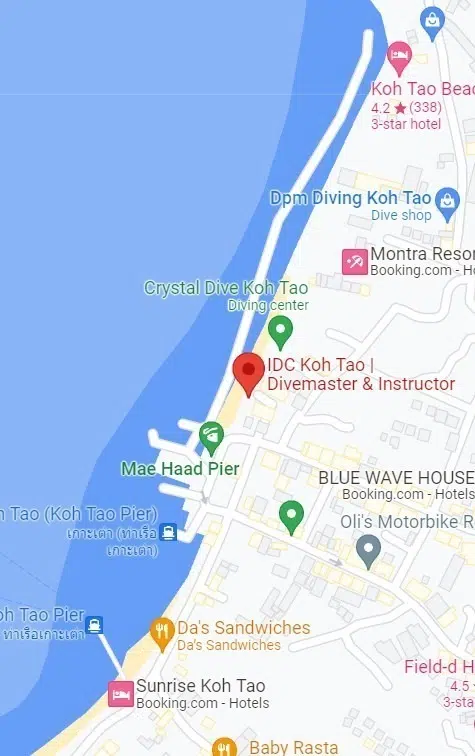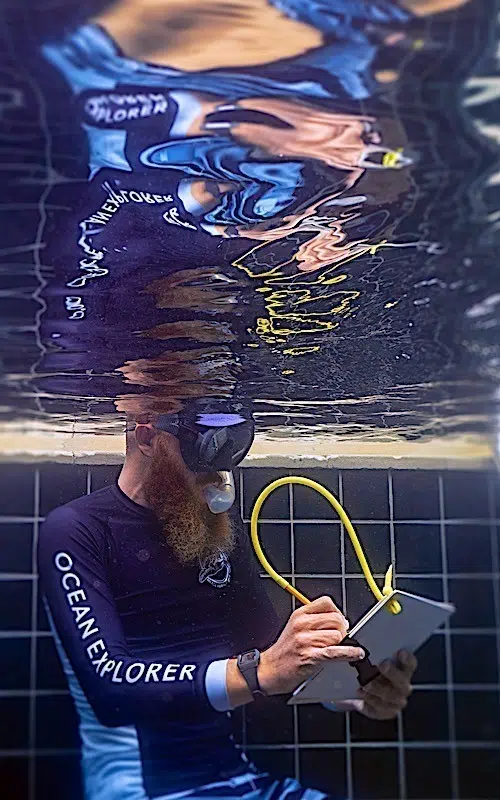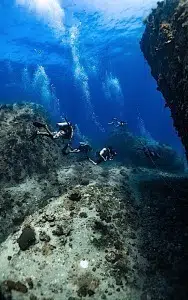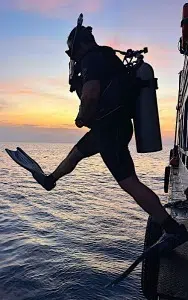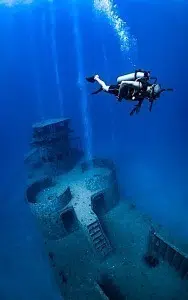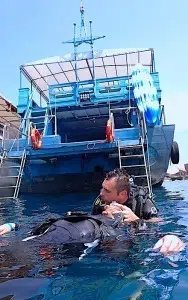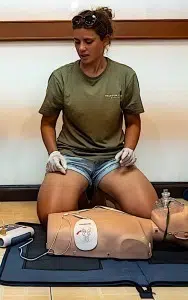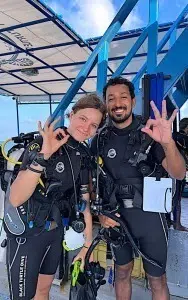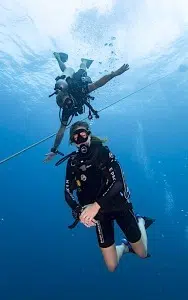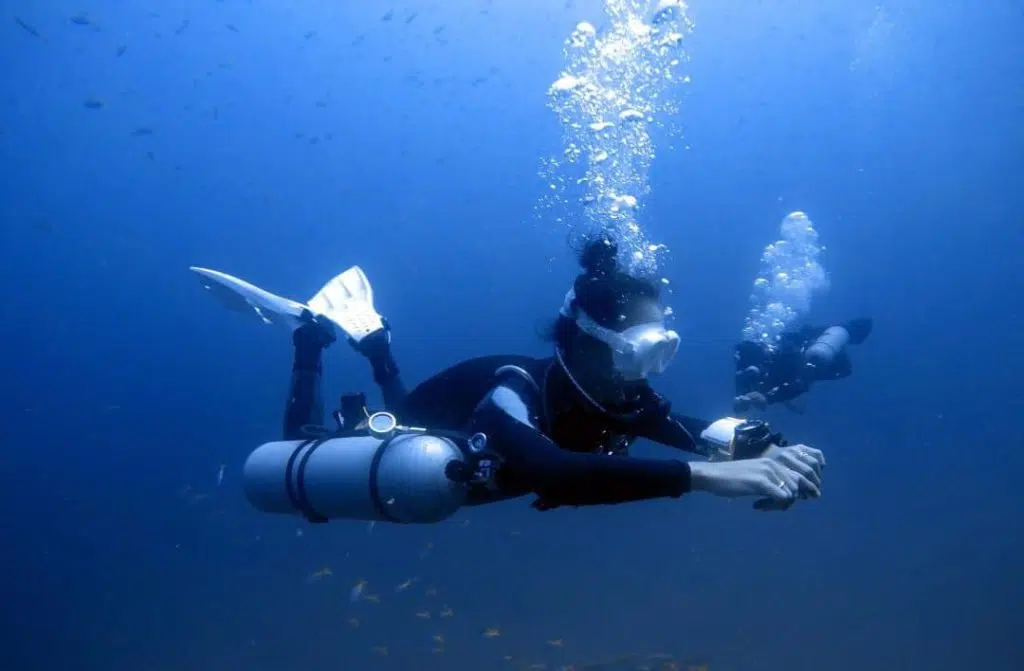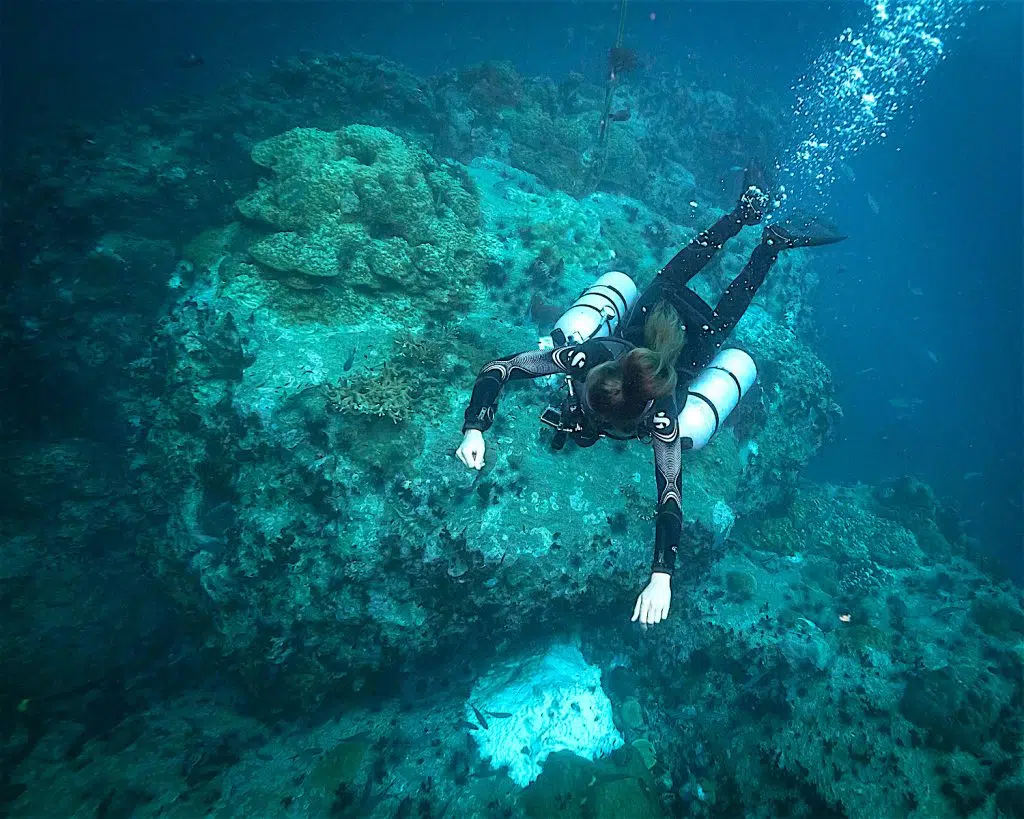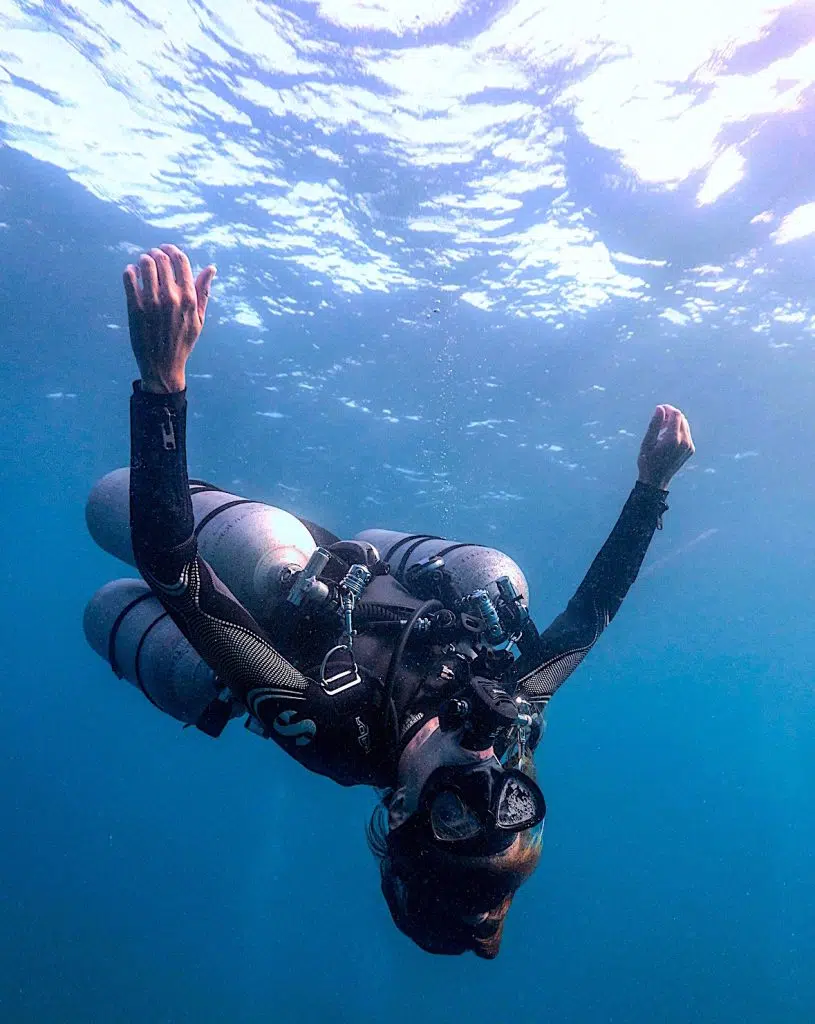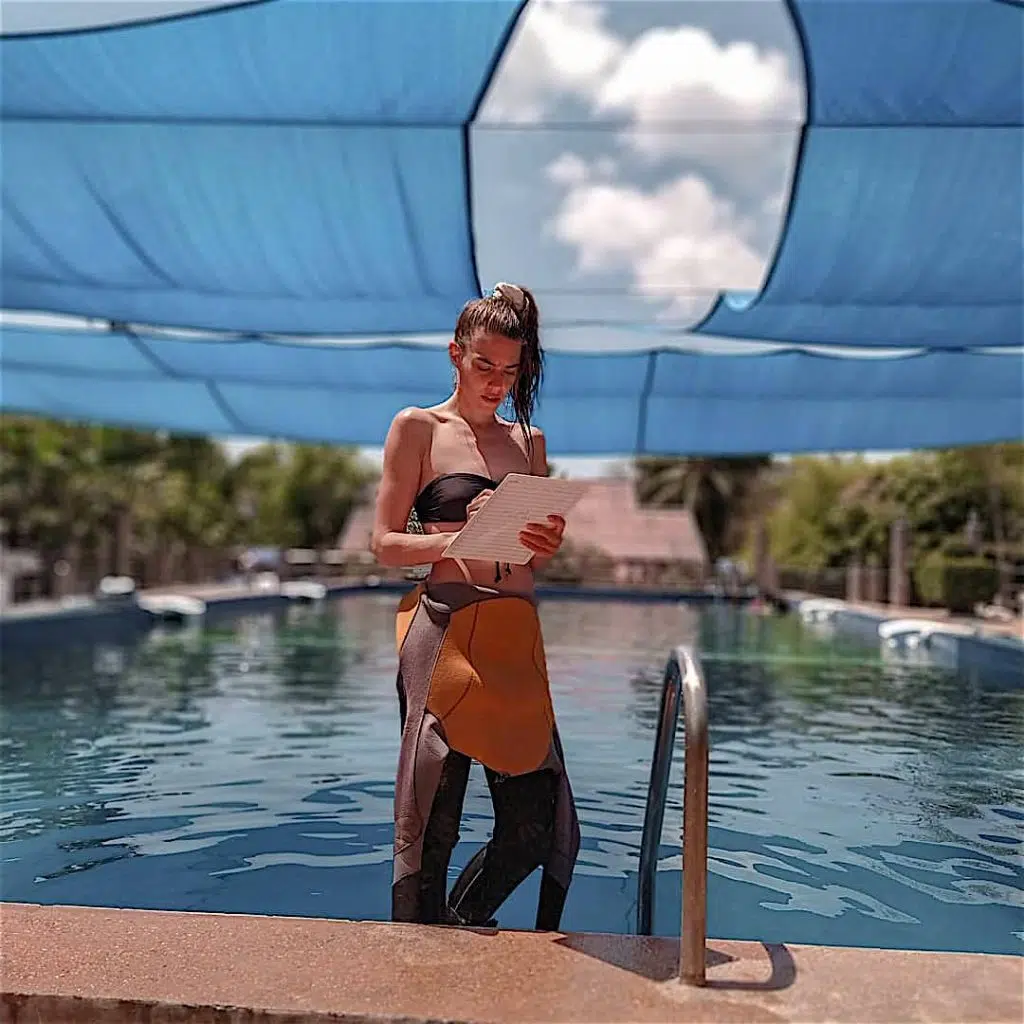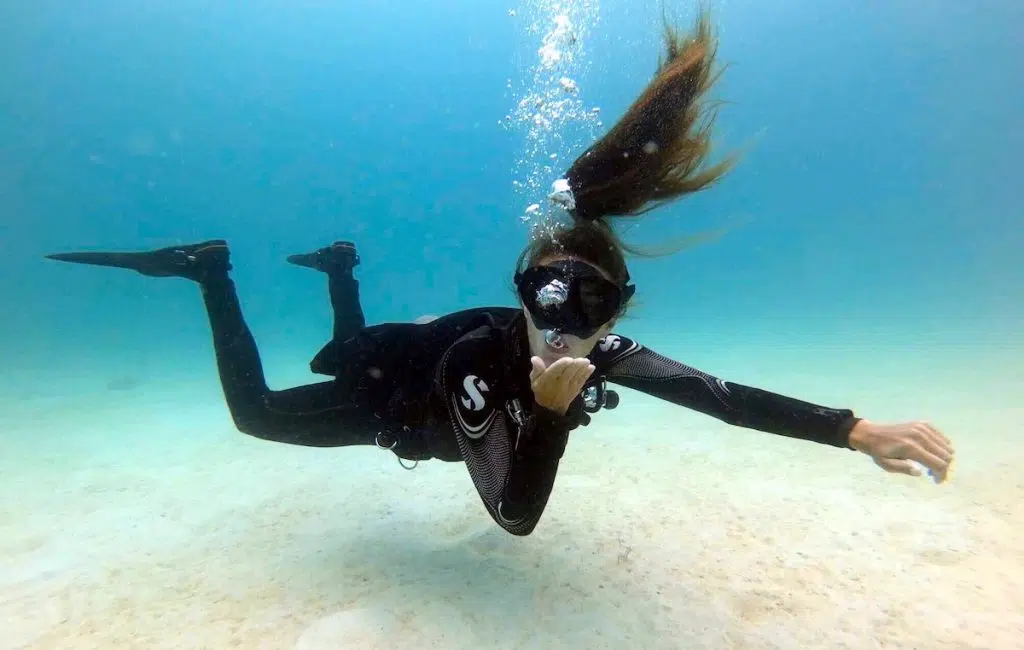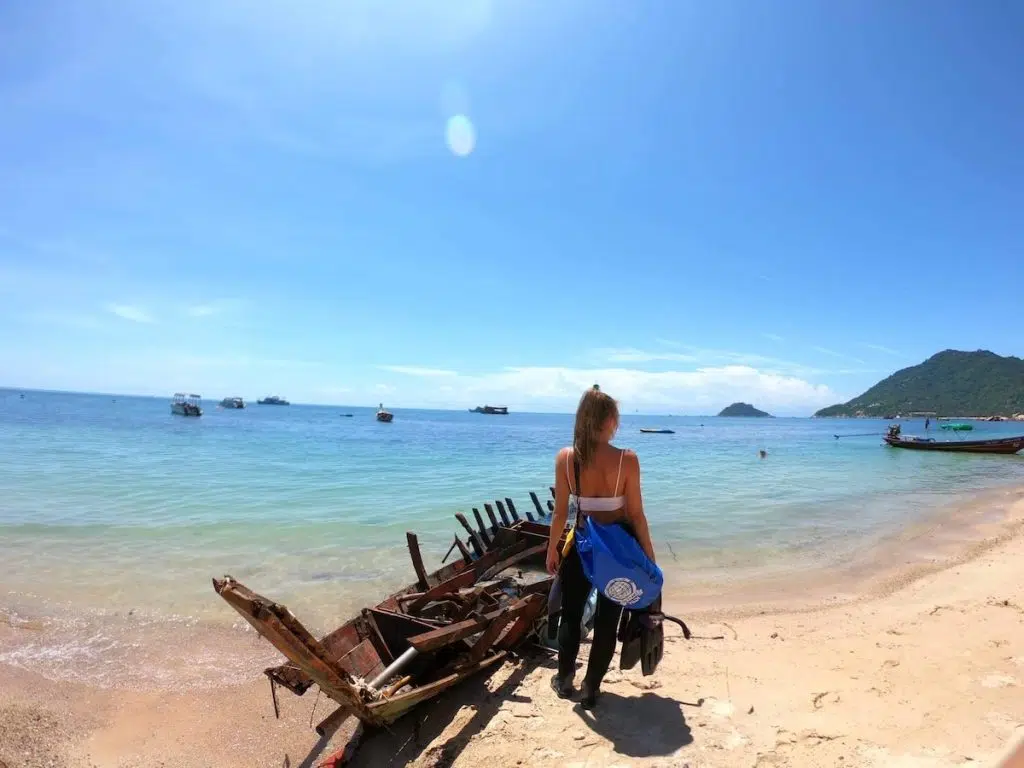The Benefits of Learning to Teach Sidemount as a Diving Instructor
I was conducting a routine dive with my Divemaster candidates using a backmount single tank configuration at Chumphon Pinnacles.
There was a technical diver also on our dive boat, diving on a Sidemount set-up and he decided to tag along with us on our dive.
Half way during the dive he surprised me by attaching both of his cylinders to my BCD’s D-rings. And that was my first Sidemount Dive.
I was immediately hooked! I must have asked the poor guy a hundred questions on the boat journey back.
I signed up when I got back to the dive shop and completed the Sidemount diver course and bought my first harness.
I have dived sidemount at every opportunity since that time.

Of course, it is not always necessary in a recreational open water environment to dive sidemount, however, there is plenty of value in using this configuration as an instructor.
Common Advantages of Diving with Sidemount Configuration
- Streamlining
- Increased gas supply
- Flexibility
- Comfort
- Accessibility
For diving instructors, there are unique benefits for PADI Instructor teaching and diving using the Sidemount set-up.
Diving Sidemount Promotes Continuing Education
Part of the tool box for every successful PADI Instructor is their ability to promote continuing education.
It is what every dive centre manager or owner expects from their employee and it is also what keeps the diving industry thriving.
This can be as simple as discussing further training course options with your student divers.
While this is an effective method, I have a much better technique that I find much more successful when promoting Sidemount diving.
I dive using Sidemount configuration. Simple and incredibly successful.
On a dive boat consisting of backmount scuba divers, I stand out like a sore thumb.
Most student divers are unfamiliar with this type of configuration and are immediately curious as to what I am doing.
As I begin setting up my gear divers start staring. Some will gaze from a far, while others will come right up to me and start asking about what I am doing.
At this point it is easy for me to discuss the benefits of diving on a Sidemount set-up and how easy it is to learn to dive in this way.
The questions start with what and why and before too long divers ask me how they can further their scuba diving education and become a Sidemount diver.
It is a great way to spark a conversation. And not just my students either.
Sidemount can be for everyone and there are lots of ways to integrate it into multiple courses.
The PADI system offers lots of links within diver training and it can be a super easy upsell to any diving course.
Link Sidemount diving with other PADI training courses.
When divers first see a sidemount configuration their first thought is Tech diving.
Divers naturally associate Sidemount with Tech diving and Sidemount diving is a great stepping stone into the technical world, with lots of technical divers using a Sidemount system.
However, Sidemount on its own can be completely recreational and is simply another way of positioning your cylinder(s).
Did you know that you could actually teach a PADI Open Water Diver Course in conjunction with the PADI Sidemount Diver Course?
Thanks to PADI’s Linking Courses, you are able to teach one Specialty side by side with PADI Open Water Diver training.
The Sidemount Specialty can also credit towards the PADI Adventures in Diving and PADI Master Scuba Diver programs.
Another exciting bit of news is that according to PADI Standards: PADI Sidemount divers are able to use a Sidemount configuration during ALL training programs.
This is only if all the performance requirements can be safely met.
What does this mean for you as a PADI Instructor?
Holding the Sidemount instructor rating opens up multiple doors when it comes to promoting continuing education.
It allows your divers to explore other configurations during their training. Why limit the options for your divers?
Not only can your divers train on a Sidemount system, you can also use it while teaching your own courses.
Diving Sidemount you are self-sufficient and it is great for problem-solving.
As a PADI Instructor you have an obligation to keep your students safe. When it comes to training, safety has always been my number one priority and I expect the same when it comes to my professional candidates.
When I began Tech diving several friends expressed their concerns for my own personal safety.
They felt technical training was dangerous and I should not be participating in such a high-risk activity.
Of course, I take the additional risks associated with decompression diving very seriously, however, I believe my tech training and equipment has allowed me to be a more conservative diver.
Become a more Confident Diver with Sidemount Configuration
During my training I was introduced to a Sidemount configuration and the importance of redundancy.
In order to be truly self-sufficient, you would need to be redundant in all lifesaving equipment.
What better way to achieve this than to have two complete independent systems? I was going to the same depths as recreational divers with double the gas.
Who is safer now?
Your equipment does not know the difference between a recreational dive or a technical dive. It could fail on you, at any time and it is important to be prepared.
When it comes to recreational no stop diving, having this additional gas supply allows me to be extra prudent when it comes to gas planning.
I am also adequately prepared to handle any problems that may come my way during a training dive.
Solving problems underwater can take time. What buys you time? It only makes sense as an instructor to have an extra gas supply when diving with multiple students.
Especially if you are taking them to depth or in an overhead environment.
During Instructor specialty training, I am always taking my candidates to 40 meters or on wreck penetration dives.
Diving on Sidemount allows me to feel prepared to take on any situation; including:
- Failed low pressure hoses
- Free-flow regulators
- Students running out of air
Any of these things could happen to you during a dive and as a PADI Instructor you need to be equipped to handle them.
When using the Sidemount system, you have easy access to each one of your valves.
You can effortlessly isolate a problem in one tank and switch to the other within seconds.
Another major benefit to diving on Sidemount is the Hogarthian style regulator set-up with a long 2 metre hose on the right cylinder.
There are different versions of this configuration, however, this is quite common to most recreational Sidemount divers.
Giving air has never been easier. Sharing air on a standard 90cm hose is uncomfortable and could cause unnecessary stress in an already uncertain situation.
Especially in an overhead environment. Using a long hose will allow you to deal with this situation in an effective, efficient and comfortable manner.
It is easy to use and you can include this in your dive brief to your students during your pre-dive safety and buddy check.
Become a Sidemount Diver & Continue your Instructor Development
I briefly discussed the idea of personal development in my previous blog on training neutrally buoyant.
As I mentioned, it is not uncommon for instructors to get bored, even burnt out with teaching the same skills and courses over and over again.
Adding Sidemount to your teaching toolbox will allow you to continue to develop yourself as a scuba diver and teach different skills and courses.
Using a new configuration will be a challenge, testing yourself as you develop new skills. You can take a normal dive and turn it into a training dive.
Adding this diving course to my repertoire pushed me to gain additional knowledge and a better skill set.
Teaching it for the first time tested me as an Instructor and a diver. I felt like a new instructor gain. It awoke my passion for teaching and allowed me to spice things up.
As Sidemount is considered a gateway into the technical world, you can start focusing on a higher level of training.
During my classes, I ask my students what they want to get out of their PADI Sidemount course. For the majority of them, it is to become a better diver.
Become A Better Diver with Sidemount
This is easy to achieve during our waterwork sessions, as we focus on:
- Proper dive planning & gas management
- Fin kicking techniques
- Buoyancy, trim & positioning
- Buddy communication
- Problem solving
- DSMB deployment and much more
Two Scuba Tanks are better than one.
In conclusion, diving on Sidemount has given me the opportunity to stand out, as well as develop myself within the diving industry.
I am grateful to my Technical Sidemount Instructor for introducing me to such an amazing world and for pushing me to become a better diver and a better PADI Course Director.
I hope I can have the same effect on my own students.
Never stop learning. Never stop progressing and always be open minded to embracing new concepts as a dive professional.
You will never know if you enjoy something until you try it.
It is easy to stay in your comfort zone but you will not grow in there. You did not become a dive instructor to do the same monotonous routine day in day out.
Like me, you chose this path so that you can explore and challenge yourself. Diving with Sidemount configuration, provides you with this opportunity.
Andrea Warren
PADI Course Director #339920




